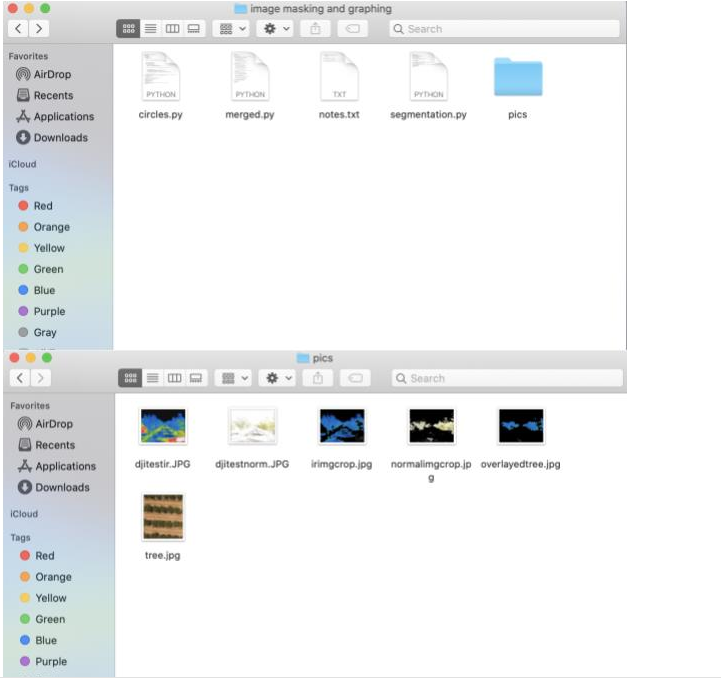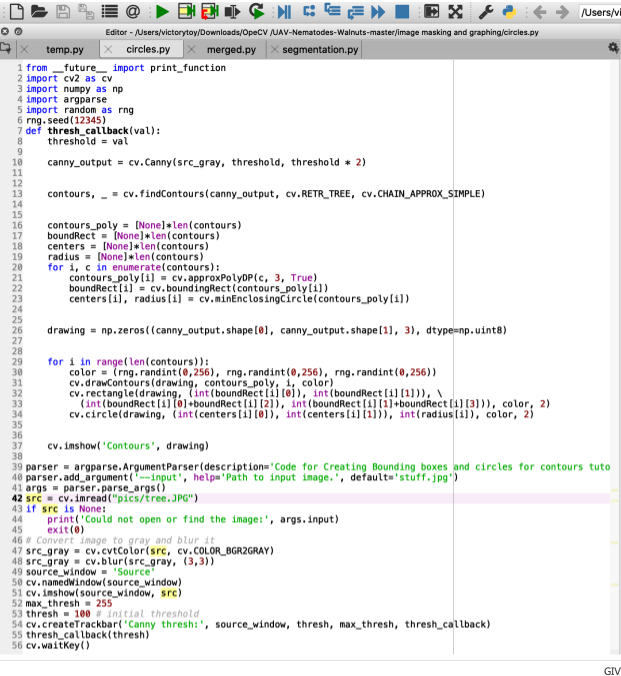Hello everyone and welcome to the UAS OpenCV image stitching team whose tasks were to create a code where it was able to stitch images together and detect nematodes. This code was to be used by the people at KARE (Kearny Agricultural Research Extension) to help determine information from the images that were taken from the drones. The OpenCV team has been coding to help the growers around our area detect nematodes in their walnut trees. The members of the OpenCV team include: Matthew Gonzales a Bioengineering undergraduate student who served as a team member for the UAS team and was very helpful for creating the code needed for the project, Jewell Graham a second year Mechanical Engineering major who researched many parts of the code so that it was able to run, she also gave many great ideas of what we should do next for the project, Daniel Victor Siapno a second year Mechanical Engineering major who was also there to research parts of the code and provide help for the team when needed. The OpenCV team did get some of the code to run but later decided that there were some tasks that were too difficult and couldn’t move on with the code.
Once we were able to find the code and be able to run it, we used some of the images used by the past UAS teams to see whether it worked or not. We did many trials of the code and used 3 images of the tree canopies and saw that it was able to stitch the images of the trees. We did see some complications on how the code could be confusing to the growers that may be using it. The code will only stitch the images if they are all in the same file and that means that when saving the images to your computer, it all has to be in the same folder in which is going to be called be the code. It is not that hard to do but that may be the reason why the code may not run. Another complication that we found out was that the images will not show on MacOS computer unless they go back to their files and check, but the stitched images will be there after the code runs. Although those are some issues that some may encounter, those problems can be easily fixed.
With all this being said, the OpenCV team did a lot of research if this was the way to move on with the project. A lot of research was done finding programs that could also be used such as, MATLAB and Pytorch. We concluded that OpenCV is the best program to be used for this project because it has many benefits that could help growers detect nematodes in their trees. A lot of the things that we researched were found on the free web and on YouTube and these helped us a lot because it gave us some of the information needed to run the code and it gave us information that we didn’t need. When we would run into problems for the code, we contacted many different people that were intelligent in this area including past OpenCV member and some people from the Computer science department. The OpenCV sub team plans to make it as user friendly as possible and find the most efficient way to detect nematodes for the growers.



